Custom Web Application Development: the Ultimate Guide

Custom web application development is a highly personalized deal where pre-built solutions fall short. With its help you are able to create web applications designed and suited to your particular workflow and goals. Knowing what it is, price, benefits and trends puts a decision into perspective on how to build a tailored digital tool.
Personalized web apps put unmatched flexibility and control at your disposal and give you the freedom to build custom web application that optimizes internal workflows, invigorates collaboration or forges entirely novel avenues for user engagement with your brand. Working with a trusted web app development company in the UK can help you bring these ideas to life with solutions that match your unique vision and objectives.
Made-to-order web applications are firmly embedded in the experience of Internet users, to the point where they often don’t even realize they use them every day. We will get to the heart of what is a web app, how it differs from a website, the ins and outs of custom web app development and how this tool helps companies grow and increase sales.
What is custom web application development?
Development of сustom web application is the creation of computer programs with an interface that is accessible via the world wide web, with emphasis on the specificity of the tasks of the ordering party. Contrary to the majority of software products that may be bought ready to use, custom web applications are developed for their individual purpose to facilitate unique needs and tackle specific issues.
Custom-made web application development process includes requirements analysis, application designing of the architectural framework and designing the application interfaces. After the coding phase, testing is conducted in order to determine the functionality, security and performance of the application prior to the actual deployment of the app.

Made-to-order web development gives a lot of control over the application and makes it also easily scalable or alterable based on the client’s requirements. Moreover, custom web apps are also able to complement other systems and processes making the entire operation more efficient.
It can be noted that personalized web application development enables the user to arrive at the final web application that is not just any tool but the precise tool that would effectively address the user’s expectations. Thus, this approach helps to obtain a rather individual and close user experience, being an advantage over the standard applications offered in the market.
Pricing of custom web application programming
The price estimates will actually depend on the following factors: the magnitude of the project, the technologies to be used in the project development and who the developers are. Whereas there is a set fee to use off-the-shelf software, a price for a custom web application is normally charged per project based on the need in the process and the work to be done.
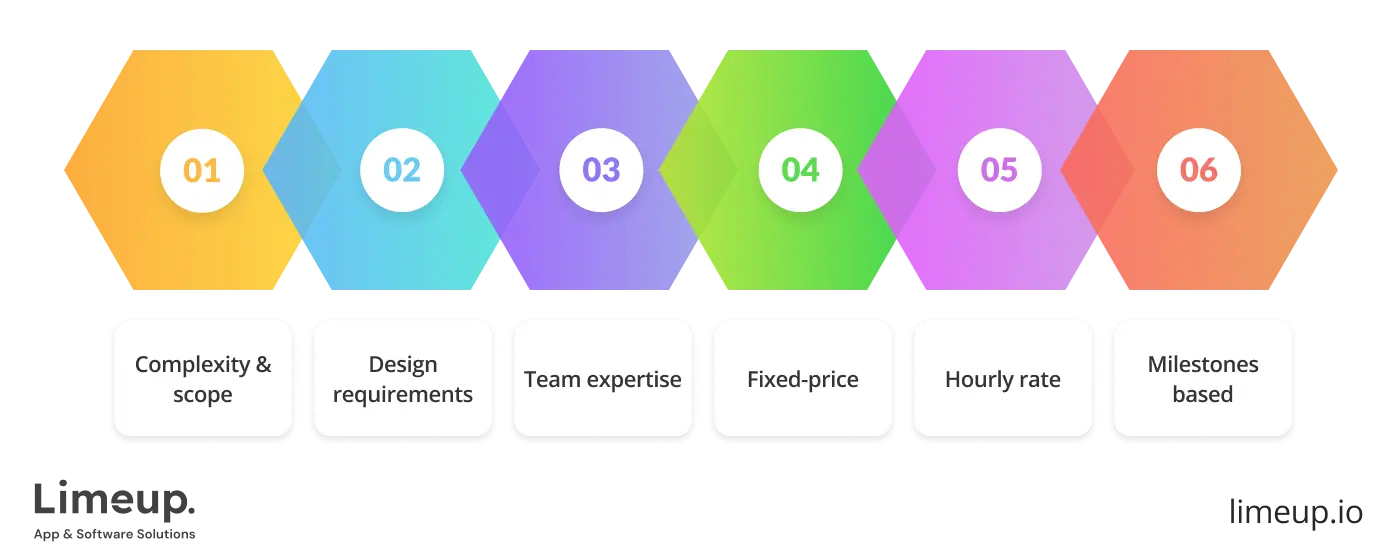
Complexity and scope. The more complex the application the higher the cost will be, running from $5,000+ for a simple app to over $100,000 for an intricate app. It is clear that custom web applications development that has enhanced functionalities such as e-business capabilities, linked databases or real-time applications will necesserily consume more development time and resources compared to an application that is merely informational.
Design requirements. Many custom web applications run with specific designs that match the brand image of a company and the extra design work brings the price up. As for the factors influencing the price, we can mention such aspects as the project’s complexity, customization of the interface and the emphasis on the responsive or mobile-first approach.
Development team expertise. Another cost that differs is based on the skills and location of the custom web application developer which means the production cost may differ. For example, the cost for a programmer’s services may range from $100 to $250 per hour in the United States and most of Western Europe versus $25 to $75 per hour in Eastern Europe or Southeast Asia.
Custom web app development may be cost-controlled in a variety of models, depending on the project and the inclination of the client.
Fixed-price. In this model, the client pays a fixed amount for the entire project, mostly based on an initial detailed project plan. This model functions best when the project’s requirements are clearly defined and remain constant throughout the development phase.
Hourly rate. In this case, the customer covers the time the software engineering team spends working on the project. It is most appropriate for projects where requirements may vary at any stage of the web application custom development process.
Milestones based. The project is broken into phases or milestones, with payment at the completion of each phase. This model provides a good balance between fixed pricing and enough flexibility so that clients are able to review progress and control costs at different stages.
To understand the charges involved in custom web application development services a little more clearly, let us take the example of Slack. The popular communication platform was started as a custom web application. Initially built to cater to internal communication, as of 2021, it turned into a $26.5 billion company.
Slack was developed with customized features such as channel-based messaging and integration with third-party tools — all of these cost a fortune in the early days of its development. Although the exact cost of the initial creation is not made public, it is estimated that developing a platform like Slack today might cost anywhere between $50,000 and $250,000, depending on the features and integrations required.
Technology stacks for developing custom web applications
Front-end skills like HTML, JavaScript and CSS set the stage for a user-friendly interface, while back-end languages like Python and PHP are the heavy hitters behind the application’s functionality. Mastering DevOps tools like Jenkins and GitHub is the secret sauce to checking that everyone is on the same page and that deployments happen without a hitch throughout the web application’s production lifecycle.

Let’s analyze the most popular technologies and methods necessary for customized web application development in order to make it clearer what is more suitable for your needs.
Using standard markup languages
Old faithfuls like HTML, CSS and JavaScript are the tried-and-true tools of many developers. HTML for the foundation, CSS to add some texture and JavaScript to spice things up with interactivity. This well-understood trio proves eminently suitable for constructing productive web applications that prioritize user experience over laborious processing or extensive data manipulation.
Using frameworks
For tackling complex applications, some developers opt to go big with frameworks like React, Angular or Vue.js. These frameworks are prefab constructions that come with pre-built tools and libraries that fast-track construction. Think of them as a toolbox stocked with everything you need to build a custom web app that is scalable and future-proof — a real time-saver for handling complex logic and dynamic user interactions.
Choosing the appropriate method
When producing a web application, determining the best development path necessitates a keen understanding of the project’s complexities. The developer’s expertise should not be overlooked, as wielding the most effective tools is dependent on their comfort level.
A deliberate blend of established markup languages (HTML, CSS, JavaScript) and the power of modern frameworks (React, Angular) may be a masterstroke, uniting the virtues of simplicity for core features with the adaptability frameworks provide for complicated functionalities.
| Layer | Technologies |
| Frontend | HTML, CSS, JavaScript, React.js, Angular, Vue.js |
| Backend | Node.js, Python (Django, Flask), Ruby (Ruby on Rails), PHP (Laravel), Java (Spring Boot) |
| Database | MySQL, PostgreSQL, MongoDB, SQLite |
| DevOps | Docker, Kubernetes, GitHub, Jenkins, GitLab CI/CD, AWS, Azure, Google Cloud Platform |
| Extra tools | GraphQL, RESTful APIs, JSON, WebSockets |
The strategic benefits of custom web app development
Custom web applications are a win-win, providing a gold mine of advantages for both businesses and their customers. Users get a slick and speedy digital service without breaking the bank, while site owners gain a powerful tool to automate workflows and streamline operations:
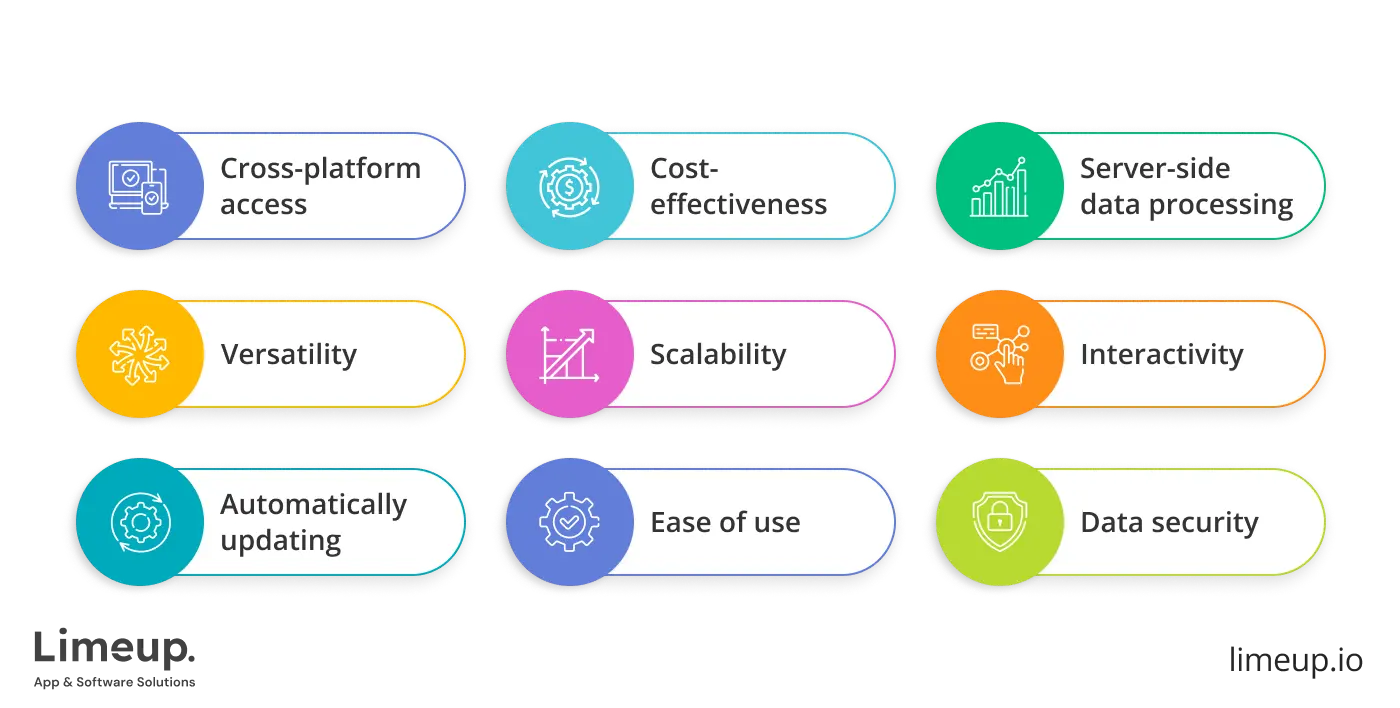
- Cross-platform access in web applications makes them the ultimate digital chameleon that adapts to whatever devices users give them regardless of their hardware choice.
- Cost-effectiveness is a real money saver, as clients sidestep the hefty price tag of building separate apps for each operating system, getting the most bang for their buck with a single web application while managing the custom web application development cost adequately.
- Server-side data processing accelerates speed by offloading compute duties, reducing the effect on device resources and assuring consistent performance under changing network circumstances.
- Versatility of the web applications is highlighted by their ability to function without the need for pesky installations or constant updates, which is easy for both custom web app developers and users.
- Scalability is facilitated through upgrades to server hardware to keep things running optimally — it’s like adding more horsepower to an engine even as user numbers increase.
- Interactivity is the heart and soul of web applications, fostering one-on-one experience for each user by using dynamic server-client interactions to deliver content and unique web app development services that are tailor-fit to their needs.
- Custom web application developers reduce the need for users to chase after the latest patches and improvements by automatically updating, keeping them both secure and functional.
- Ease of use is another defining characteristic of web applications, as they are generally user-friendly and require minimal configuration, making them convenient for novice users.
- Regarding data security, web applications store user information securely in the cloud, a far cry from the risky business of local device storage, showcasing ways for developing custom web app data safer and more accessible.
For businesses, web applications also offer a number of benefits, such as:

- Cost reduction is a primary advantage of web apps since they eliminate the need to purchase or install software on users’ devices, resulting in significant savings for enterprises.
- Web development services provide applications that put businesses in the fast lane by automating tasks, keeping users constantly armed with the latest intel and tools and ultimately increasing efficiency.
- Customer service undergoes a paradigm shift with web applications, as any custom web application development company may equip users to navigate solutions and access information independently, leading to a demonstrably higher-level service experience for businesses.
How much time does it take to build a custom web application?
The route to assembling a web application may be a winding one, with the length determined by many kinds of factors. Complexity, the feature wishlist, the size of your development crew and the chosen delivery approach all play a role in determining the timeframe.
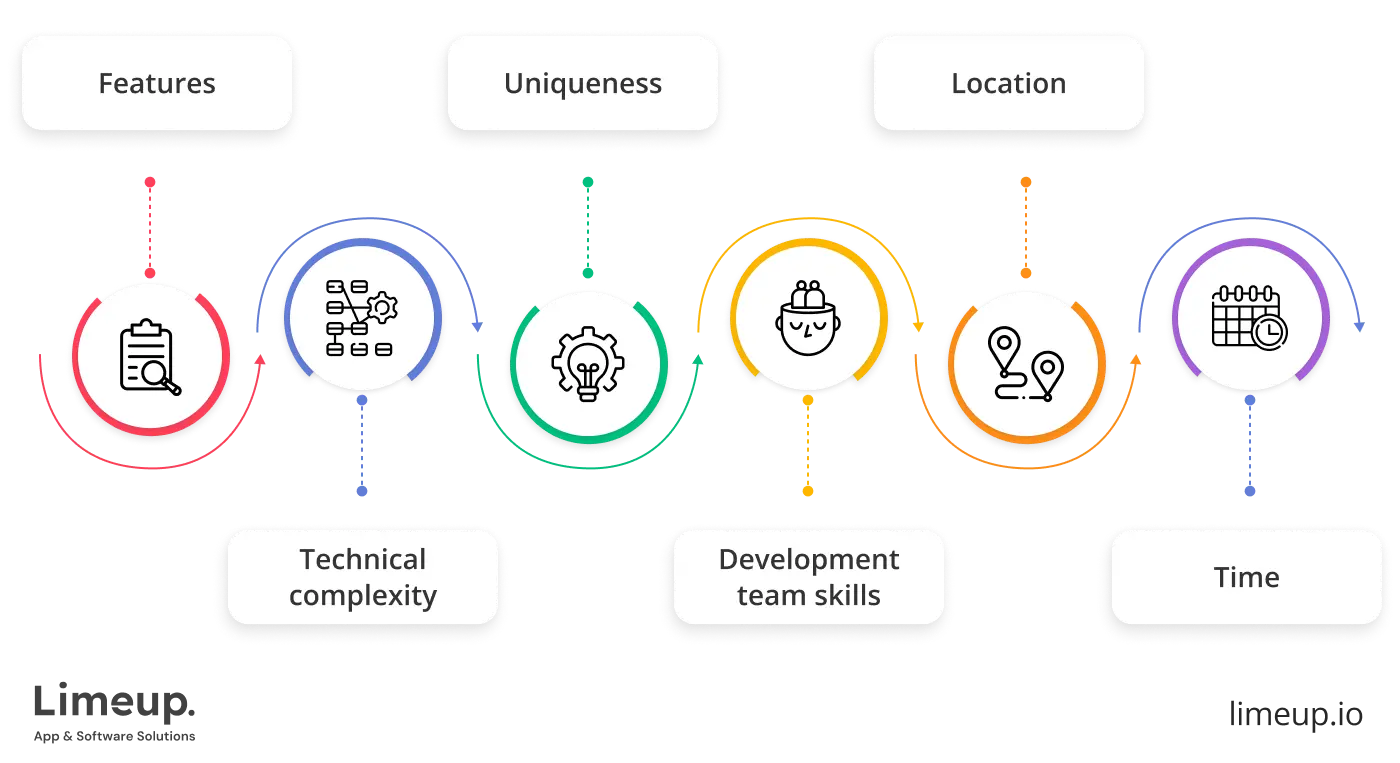
Since it is difficult to say precisely how long it will take a custom web app developer to wrestle a web application into existence, we suggest considering the approximate time required for the creation of various types of web applications:
- Static site. Like the simplest form of web applications which are constructed using HTML and CSS and with fixed content that remains consistent across all users, static apps are quick to be produced. A budget-friendly choice for showcasing, for example, a portfolio or displaying static data typically takes around 190 to 260 hours to complete.
- Dynamic web application. A dynamic web application with the ability to change, edit or delete content on the fly adapts its display based on your device and location — the programming takes around 220 to 300 hours.
- E-commerce web application. The full package that includes a Content Management System (CMS), integrated payment gateways and SEO-optimized layouts together with push notifications and chatbots. Duration is around 350 to 700 hours.
- Web portal development. Web portals span across various categories: B2B, B2C and educational communities. To develop custom web application like this demands a substantial time investment, typically ranging from 600 to 1000 hours.
- PWA (Progressive Web Application). This sort of web application combines the functionalities of most recent browsers with the advantages of mobile usage. The average time spent developing a PWA is between 200 and 400 hours, conditioned on the application’s complexity and functionality.
Personalized-made web app development vs ready-made solution
As far as the difference between ready-made web apps and app development from scratch are concerned, it is right to notice that they both are good, though the choice is rather based on your business requirements, financial position and further expectations. We will examine some of these techniques’ distinctions as well as a few real-world instances in the paragraphs that follow.
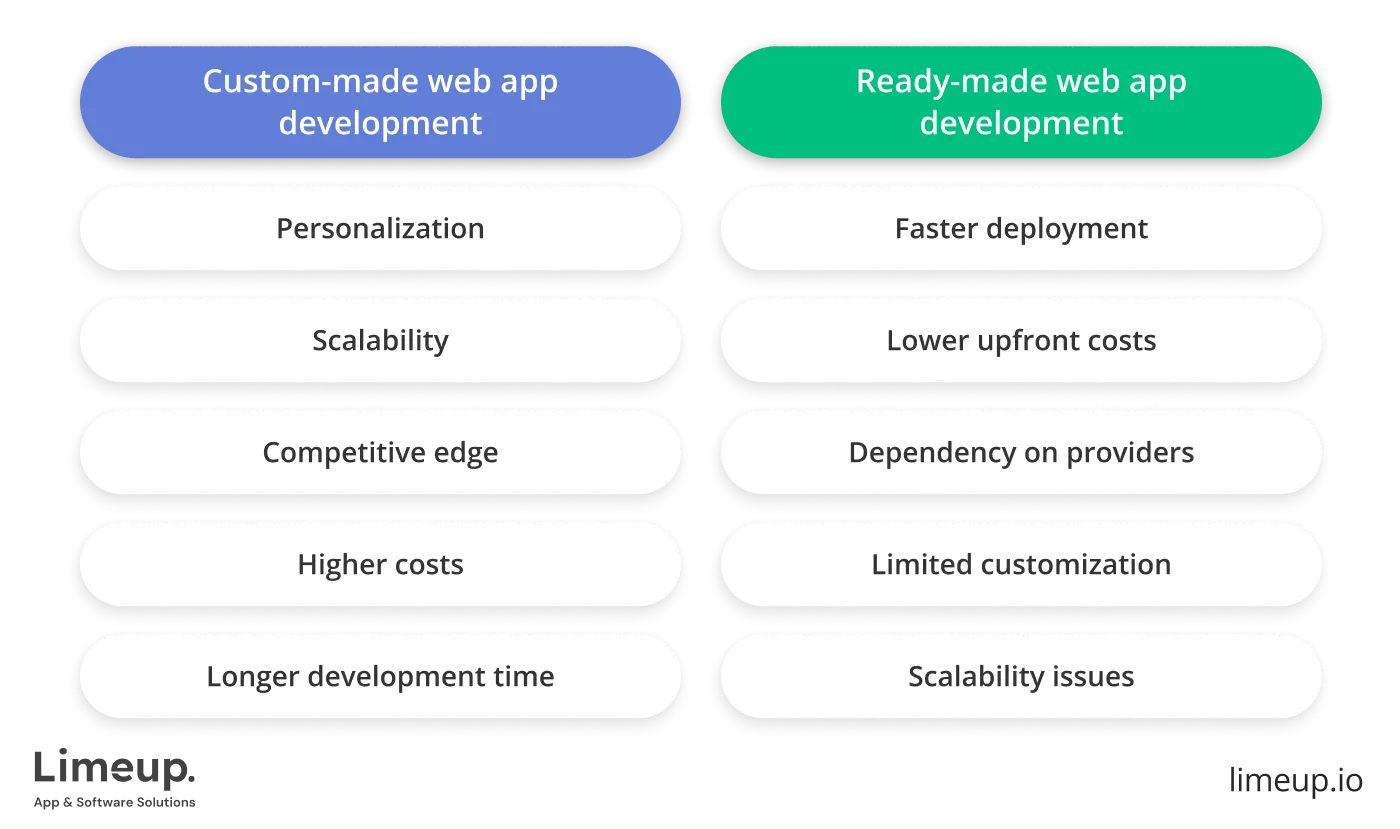
Custom-made web app development. Unlike ready-made web apps, which may sometimes feel like trying to fit a square peg into a round hole, custom apps are designed to meet your exact requirements — like a tool that ticks all the boxes. Here are what features of custom web application engineering distinguish it from off-the-shelf products:
- Personalization. A tailor-made app is like a handmade suit — created to your exact specifications and integrated with your particular business procedures.
- Scalability. Your personalized app may evolve with your company as it does, conveniently adjusting to new priorities and breakthroughs. For instance, Netflix started with a less complex platform and evolved its custom-built web application to address millions of users streaming content in real time across the world.
- Competitive edge. A custom app is also important to make it easier for you to go to market with features that your competitors don’t have.
- Higher costs. Developing a custom app may cost an arm and a leg, with substantial upfront investment due to the bespoke nature of the development.
- Longer development time. Certainly, custom web app solutions take time to develop — take Dropbox which had to wait several months for its platform to be perfected in order to match its unique requirements before releasing its whole feature set.
Ready-made web app development. Ready-made web apps are like off-the-rack garments – packaged programs that address standard requirements. These apps give organizations a temporary solution should they seek to begin operations without incurring high costs.
- Faster deployment. One advantage of adopting a ready-made app is that you don’t start from zero hence you are able to start immediately. Such an application has already been developed and undergoes standard testing so you have the capacity to use it right away.
- Lower upfront costs. Off-the-shelf programs usually cost less than solutions developed from the ground up and thus are more preferable to companies with lean pockets. As an example, compared to creating a custom solution from the bottom up, Shopify offers an e-commerce platform that firms are capable of using with little initial investment.
- Dependency on providers. Buy-and-implement web application solutions mean you’re in the vendor’s hands when it comes to updates and other technical support — this dependency may be problematic if you need urgent changes or face service disruptions.
- Limited customization. Pre-developed applications may be rather standard with a little flexibility and it means that you have to work with existing set-up templates and even change your working model to fit the program.
- Scalability issues. As your business grows, you might hit a wall with the app, encountering limitations that could force you to consider switching to a different solution.
| Aspect | Custom-made web app | Ready-made web app |
| Customization | Fully customizable to specific needs | Limited customization |
| Implementation time | Longer development time | Quicker development time |
| Cost | Higher initial cost | Lower upfront cost |
| Scalability | Highly scalable as business grows | May become restrictive over time |
| Flexibility | Adaptable to evolving processes | Standardized, less flexible |
| Maintainance | Requires ongoing updates and support | Managed by the software provider |
Trends in custom web applications development
Web application production has become a growing field that is constantly evolving and upgrading. Many advances are changing this burgeoning field and impacting how developers think about design, architecture and functionality. Playing the long game in digital innovation requires knowing these trends.
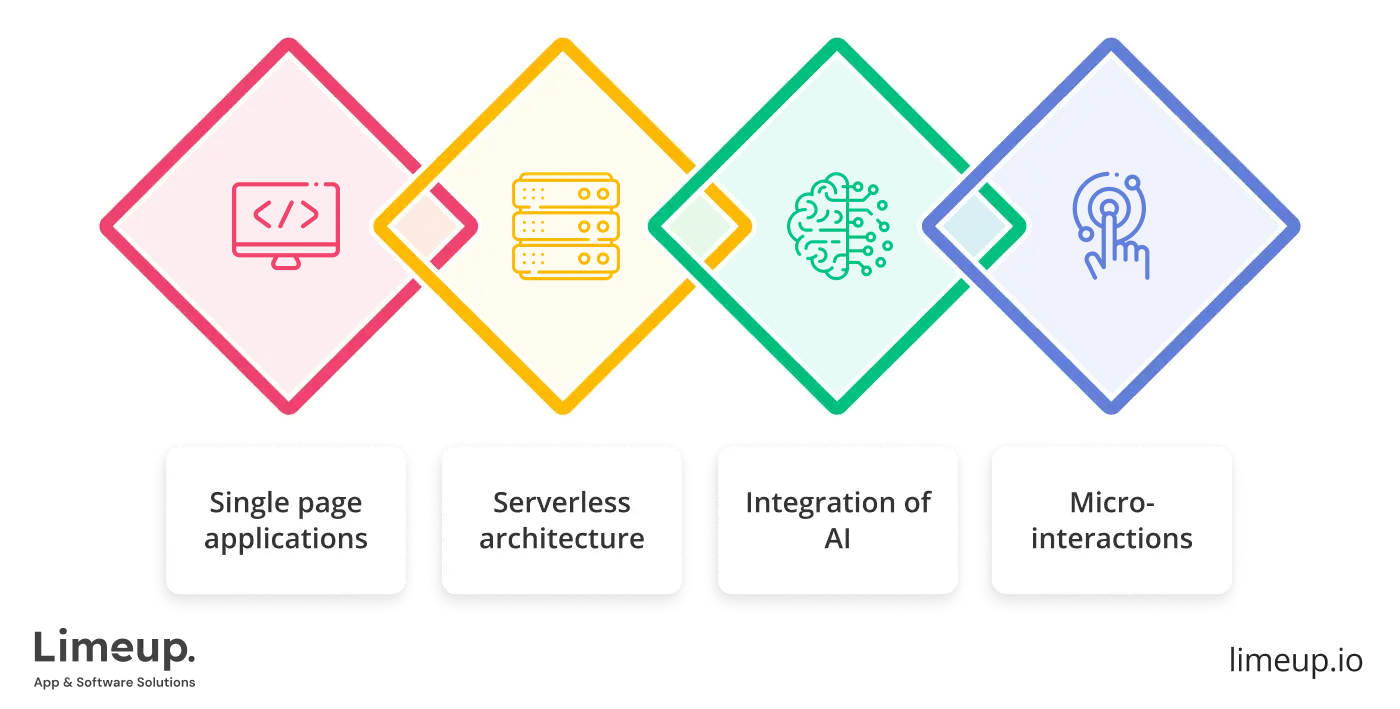
Single page applications (SPA). Single Page Application (SPA) might be used to refer to a web application that loads a single HTML page and updates the content through human interaction with the application. SPA uses frameworks like React, Angular or Vue.js to provide navigation and content rendering routines instead of a complete page reload.
Serverless architecture. The serverless computing paradigm, also known as feature-as-a-service (FaaS), is a serverless architecture that hides server administration from developers, freeing them to focus only on developing code. Serverless computing opens up you to develop custom web app with discrete activities that scale based on demand without the need to maintain and provide servers.
Integration of artificial intelligence (AI). The infusion of AI acts as a powerful accelerant, propelling the user experience to new heights. Finely honed recommendations deliver a personalized touch while ingenious algorithms streamline the intricate search journey. Advanced analytics turn into a potent intuition, meticulously gauging user sentiment and predictive modeling capabilities offer prophetic insights into the future.
Microinteractions. Microinteractions in developing custom web application are a real game-changer because they make experiences more enjoyable by giving the user instant feedback and a responsive feel. They cover everything from simple button animations to intricate visual effects that mimic real-world interactions. Incorporating microinteractions and a dynamic user interface not only boosts user-friendliness but also enhances brand image and drives user satisfaction through the roof.
Voice user interface. VUIs are quickly taking the lead in the creation of custom web apps, especially in light of the popularity of voice-activated gadgets like Google Assistant and Amazon Alexa. Synchronizing voice commands to web applications opens up a new level of interface and also increases the usability and availability of web services.
Integrating VUI in custom web applications results in having a hands-free system that may also include voice search and real-time operations tailored to the growing market of voice-assisted technologies.
API-first development. By focusing on the design and development of APIs, a web app development company may help businesses make their web applications more modular or plugin-like, allowing easier access by other systems. It helps the frontend and backend side of the application to come together and work hand-in-hand and make more efficient use of some third-party services.
Low code and no code. Low code and no code toolkits are dramatically changing the way custom web applications are built and modified with changes that allow users without necessarily much coding experience to build and modify web applications. These platforms help speed up development cycles, minimize costs and allow businesses to get to market with tailor made solutions quicker.
To sum up
We strongly hope that this post helped you comprehend the key elements involved in the development of custom web application. Understanding the crucial cogs of app production as well as the involvement of professionals in each may assist you in creating an effective and understandable web-based program for consumers. Factor in the cost, keep your finger on the market’s pulse and sharpen your product to a fine point for it to truly shine.
Adopting custom web app dev for your company is a strategic decision that opens the door to personalized solutions to particular operational difficulties. Unlike off-the-shelf apps, it strengthens internal procedures and stimulates consumer interaction through individualized user experiences, driving growth and competitive advantage in the market of digital products.
Getting started on the custom web-based application development road may be a formidable task but working with an appropriate web app development agency will be an enormously rewarding experience. Put this guide to good use as your starting point to take the first step towards the goal of making web applications that turn heads.

